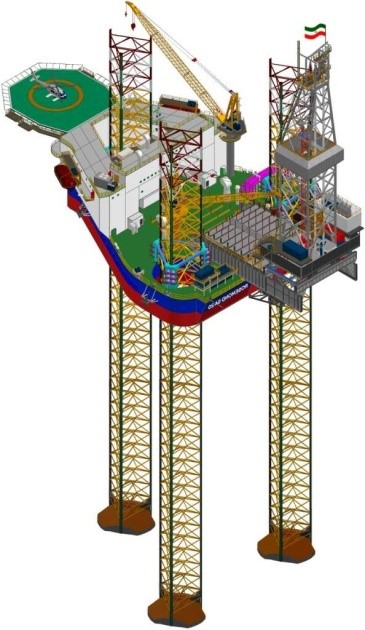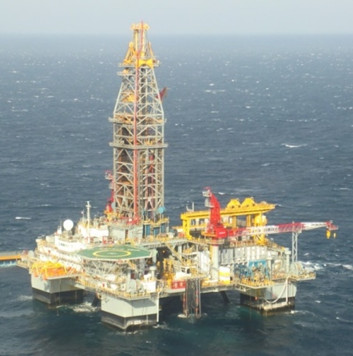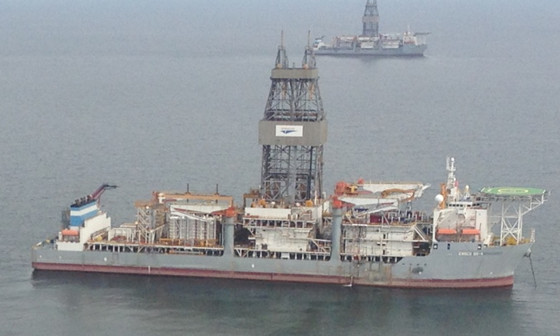The Drill Down, Issue #3: What is a Mobile Offshore Drilling Unit?
 Introduction
Introduction
As defined in 33 CFR 140.10, a “Mobile Offshore Drilling Unit or MODU means a vessel, other than a public vessel of the United States capable of engaging in drilling operations for exploration or exploitation of subsea resources.” MODUs are employed offshore with the purpose of either drilling a new well or conducting some sort of maintenance on an existing well. Once well work is completed, the MODU moves on to the next contracted job. The completed well is then connected to a facility for the production of oil and gas. There are various MODU types, each with different operational capabilities and limitations.
 Self-Elevating Units
Self-Elevating Units
Self-elevating units, also known as jack-ups, are generally non self-propelled vessels with a series of legs. Jack-ups are also categorized as bottom bearing units. When being towed to the drilling location, the legs are in a raised position and lowered once positioned at the desired location, a series of gears lower the legs to the seafloor. Once safely settled onto the seafloor, the hull is then raised out of the water, creating a stable environment and reducing the effects of the sea state. There are two basic categories of jack-ups: mat supported (image left) and independent leg (image right). The legs of a mat supported unit are all connected at the bottom to a mat. This mat is jacked down and settles onto the seafloor. Due to the mat, they require a relatively flat seafloor contour. Mat supported rigs operate in a maximum water depth of 350 ft. and accommodate approximately 60 personnel.
Independent leg rigs differ in that each leg is independent in operation and can be set at different seafloor depths if necessary. The hulls also tend to be larger, facilitating more personnel and equipment on board. Independent leg units operate in a maximum water depth of 650 ft. and accommodate approximately 60- 100 personnel.
 Semi-Submersibles
Semi-Submersibles
These units, also known as column stabilized units, are part of a larger category of MODUs known as surface units, because they float on the surface of the water while drilling. Their structure is a series of columns joined together by underwater pontoons. One can find both non self-propelled semi-submersibles as well as dynamically positioned (DP) units (image above). Given the unique hull, with reduced water plane area, monitoring the variable loads (riser, drill pipe, drilling mud, cement, etc.) becomes important to maintain adequate stability. Semi-submersibles can drill in deeper water and are known for their better seakeeping capabilities. Non self-propelled semi-submersibles operate in a maximum water depth of approximately 6,000 ft. while DP units can operate in up to 10,000 ft. water depth. These MODUs can accommodate approximately 80-125 personnel.
Drill Ships
Also categorized as a surface unit, drill ships (image below) are dynamically positioned ship shaped vessels with the greatest operational capabilities due to greater tank and deck load storage. Drill ships can drill wells as deep as 40,000 ft., with a derrick capable of drilling with up to 2,000,000 lbs. of equipment weight. While having a traditional hull shape, they tend to be outfitted with 6 fully rotational thrusters, 3 on each end of the hull and can conduct operations in up to 12,000 ft. water depth, accommodating up to 200 personnel.